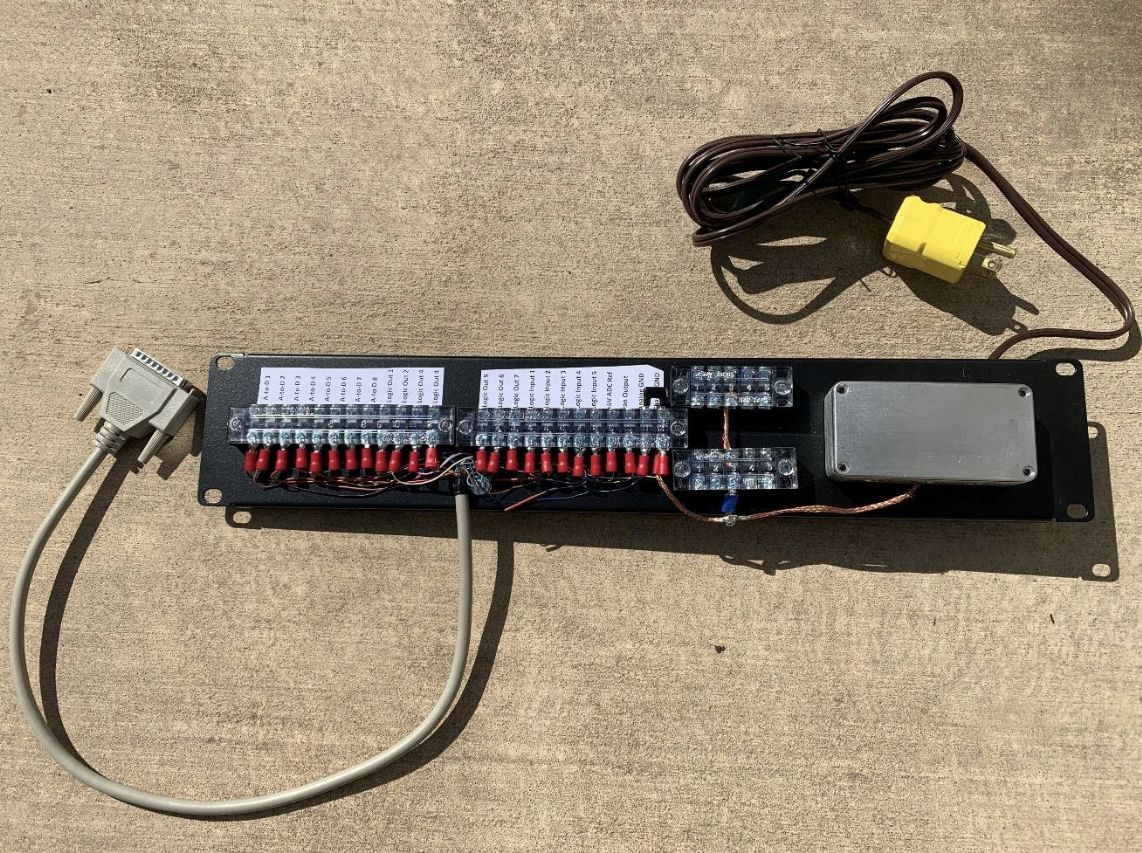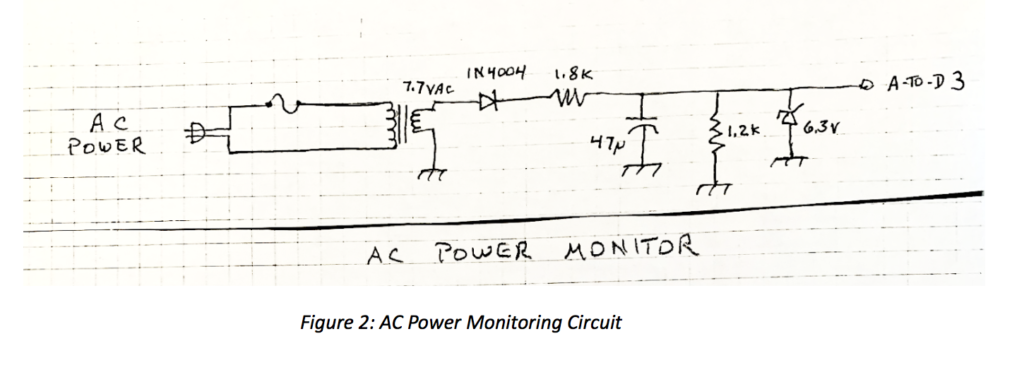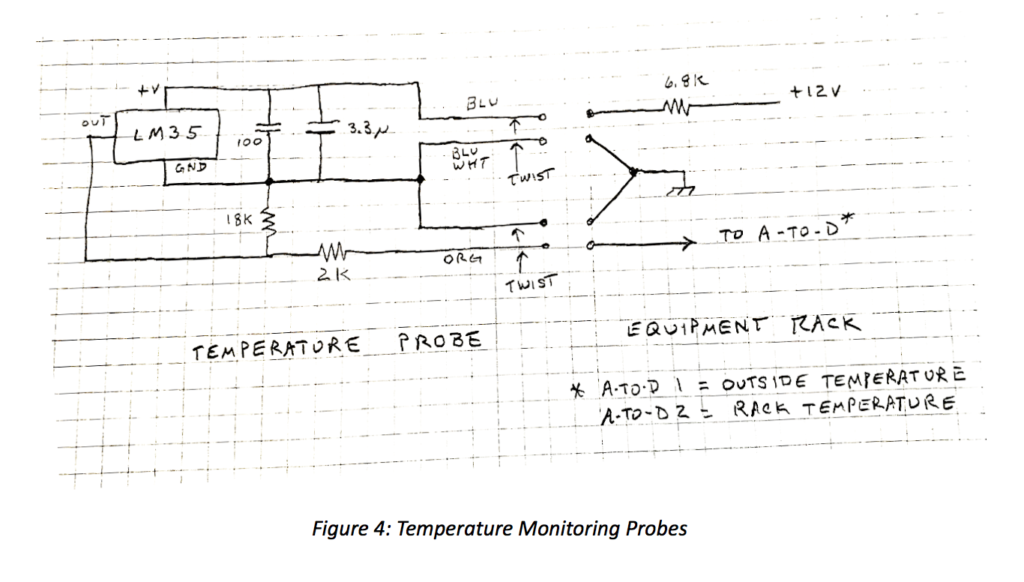K6BJ 2-Meter Repeater Aux Input Panel
K6BJ 2-Meter Repeater Aux Input Panel Temperature and Power Monitoring
Introduction
The recent upgrade to the K6BJ 2-meter repeater includes a new Arcom RC210 repeater controller. The controller has a number of capabilities not currently in use. This document covers the addition of an auxiliary input panel to allow easy connection to the controller’s multiple digital outputs and analog and digital inputs, and the connection of sensors and circuitry to allow monitoring of temperatures and power voltages. Also covered are the controller programming additions needed to make use of the new sensors, and possible future capability enhancements.
Arcom RC210 Connection
The Arcom RC210 Repeater Controller includes on its rear panel one DB-25 connector intended for the connection of peripheral equipment. This connector provides 8 analog inputs, 5 digital or alarm inputs, and 7 digital outputs. (See Arcom Version 3.5 Hardware Manual). To make these connections available for convenient use, we now add a shielded DB-25 cable to bring signals to screw terminals on a 3½ inch panel to be installed at the rear of the repeater rack. See Fig. 1.

Temperature and Power Voltage Sensing
Circuitry for the connection of temperature sensors and for monitoring power voltages is contained in a small metal enclosure affixed to the auxiliary input panel adjacent to the screw terminal blocks.
AC Voltage Sensing
AC power from the power grid or the repeater shack’s AC generator is monitored at the AC power receptacle at the base of the repeater equipment rack. A small transformer mounted to the rack panel steps down the voltage and provides ground isolation. Voltage from the transformer’s secondary is rectified, filtered, and scaled to produce a signal between 0 and +5VDC which is proportional to the AC power voltage. This connects to the controller’s AD3 Analog Channel 3 input. Scaling constants in the controller software allow it to report the power as AC volts.

Battery Voltage Sensing
Battery voltage is sensed at the fuse block in the repeater rack. Resistors scale the voltage to the 0-to-5-VDC input range of the controller’s A-to-D converter at AD4. Scaling constants in the controller software allow it to report actual battery voltage.

Temperature Sensing
Temperature is measured using an LM35, an inexpensive IC with an output voltage directly proportional to temperature, varying 10mV/°C. One sensor is in the equipment rack near the Yaesu DR-1X radio, and one sensor is outside affixed to the north wall of the repeater shack. Sensors are powered from the controller’s stabilized A-to-D reference voltage. Sensor current is limited to about 80 µA to prevent errors due to self-heating. Sensor connection is via twisted-pair CAT-5 cable. Small bypass capacitors shunt any RF voltage induced on the cable runs.
Inexpensive LM35 sensors have an accuracy of ±1°C. Their output is scaled to read degrees Fahrenheit with calibration constants programmed into the RC210.

Controller Programming
Status Query
The following query commands are supported:
- AC Power Voltage
DTMF command code: [TBD]
Repeater response: “AC power xxx volts AC” - Battery Voltage
DTMF command code: [TBD]
Repeater response: “Battery xx.x volts DC” - Outside Temperature
DTMF command code: [TBD]
Repeater response: “Outside temperature xx degrees” [requires custom DVR track] - Rack Temperature
DTMF command code: [TBD]
Repeater response: “Inside temperature xx degrees” [requires custom DVR track]
Alarm Conditions
AC Power Loss:
If the AC power drops below 102 VAC as measured by the RC210 Repeater Controller, the following actions occur:
- The repeater transmits once, “AC power out. AC power xxx volts AC.”
- Repeater courtesy tone changes to [TBD]
- Repeater ID switches to CW only at 20 wpm. ID ceases when the repeater is unused.
- After every 10th transmission, the repeater appends the tail message, “AC power out.”
When AC power is restored to at least 108 VAC, these actions occur:
- The repeater transmits once, “AC power on. AC power xxx volts AC.”
- Courtesy tone and repeater ID is restored to normal operation.
- Tail messages cease.
Low Battery Voltage:
If the battery voltage drops below 12.8 VDC, the following actions occur:
- The repeater transmits once, “Battery xx.x volts DC.”
- The repeater courtesy tone changes to [TBD]
- Repeater ID switches to CW only at 20 wpm. ID ceases when the repeater is unused.
- After every 10th transmission the repeater appends the tail message, “Battery xx.x volts DC.”
If the battery voltage drops below 12.4 VDC:
- The repeater transmits once, “Battery low. Battery xx.x volts DC.” This repeats as a tail message after every 10th transmission.
When battery voltage recovers above 13.0 VDC, these actions occur:
- The repeater transmits once, “Battery xx.x volts DC.”
- Courtesy tone and repeater ID are restored to normal operation.
- Tail messages cease.
High Temperature:
If inside temperature exceeds 100°F, the following action occurs:
- After every 10th transmission the repeater appends the tail message, “Outside temperature xx degrees. Inside temperature xx degrees”
Tail messages cease when inside temperature falls below 96°F.
Future Enhancements
In addition to the items planned above, we could consider adding a number of additional enhancements to the system.
Some low cost enhancements include:
- Repeater shack door sensor
Allow a status inquiry to determine whether the door to the repeater shack is open. Possibly transmit a message when the door opens or closes. - AGM battery monitor
Monitor the voltage of the AGM battery bank currently used for the UHF repeater. - Exhaust fan status
If we decide to install a thermostatically controlled exhaust fan, the controller could report whether the fan was on or off. - User changeable periodic announcements.
At the (sometimes considerable) cost of additional hardware, the controller could support:
- Davis Instruments Weather Station
The RC210 software includes turnkey support for the Davis Vantage Vue and Vantage Pro Weather Stations. Prices start around $190. (You never know when someone will need to know the barometric pressure at Upper Delaveaga Park.) - UHF Backbone
Connect the repeater to a backbone UHF repeater. This would allow full equality with KJ6FFP/W in Watsonville and (maybe) W6JWS in Bonny Doon.